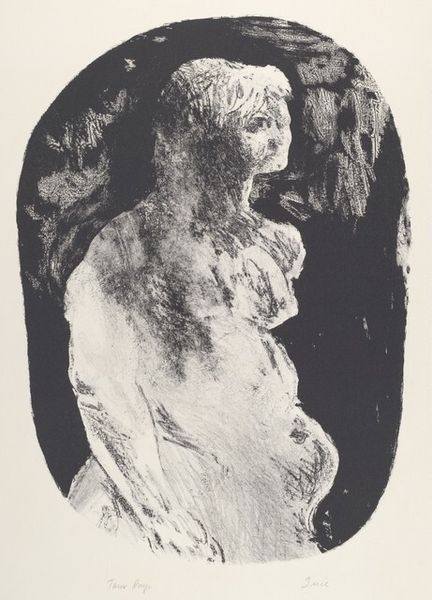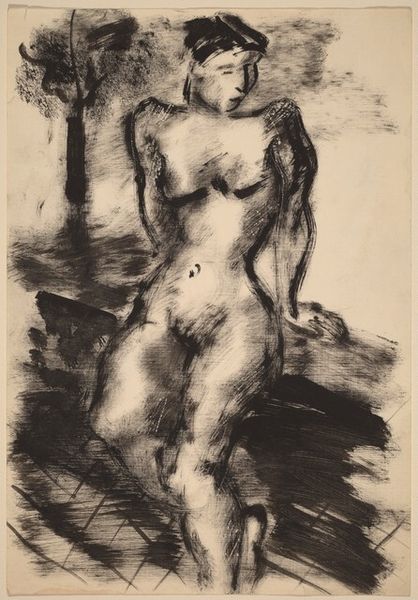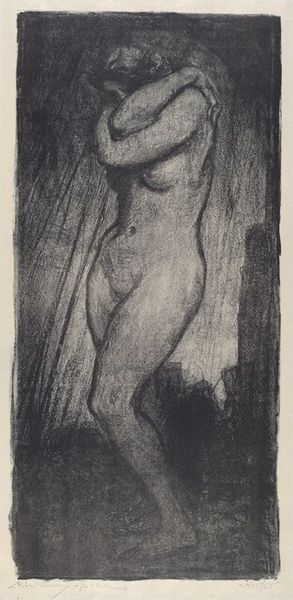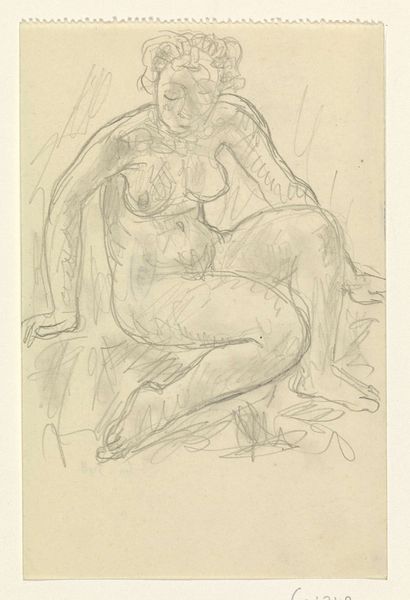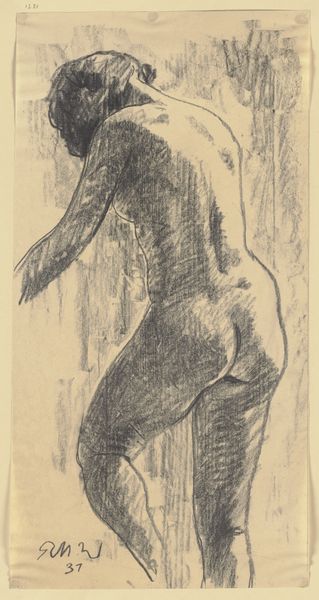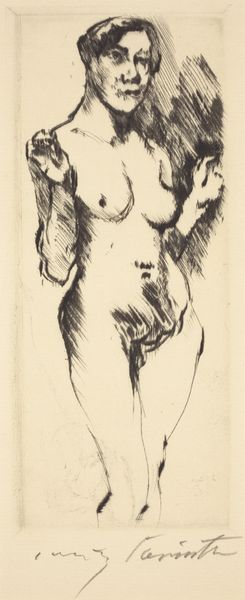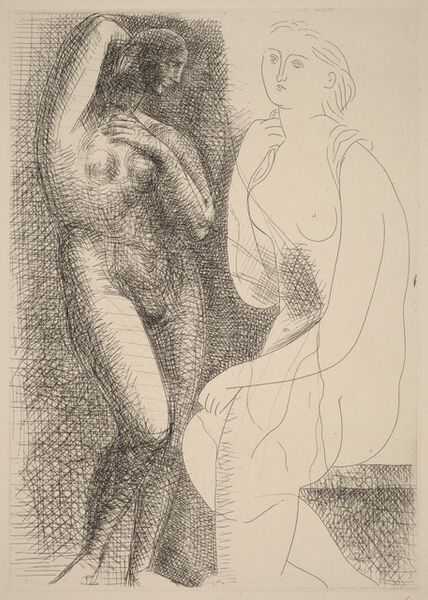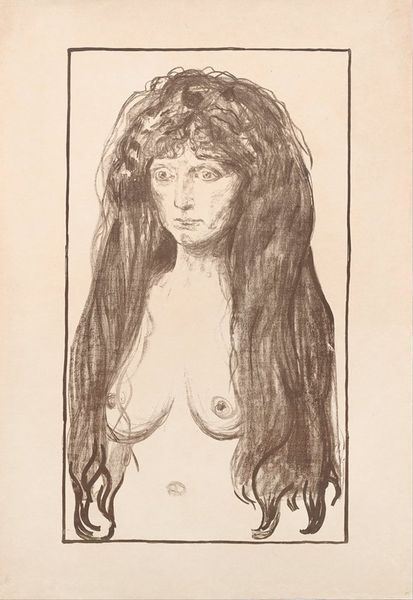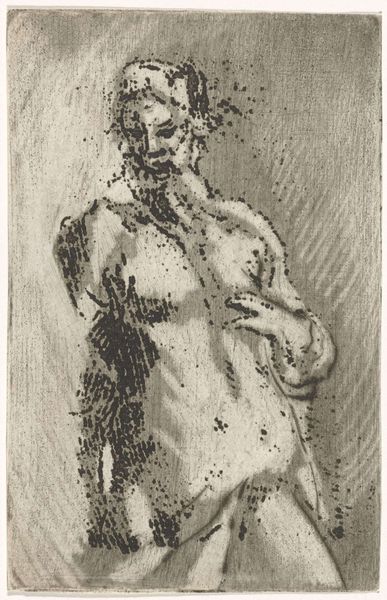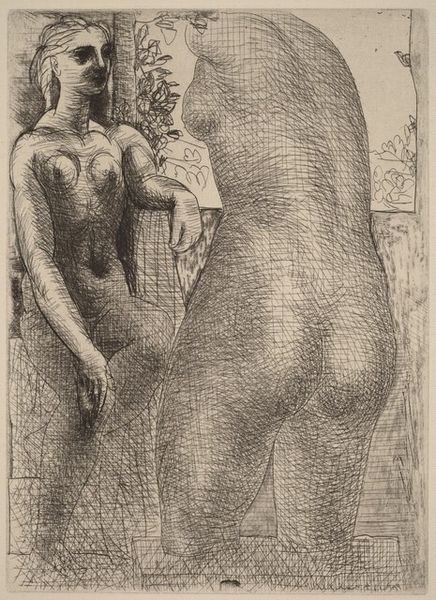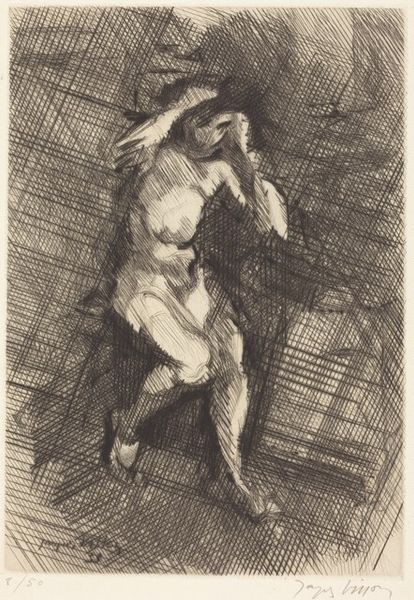
drawing, print, pencil
#
portrait
#
pencil drawn
#
drawing
# print
#
pencil sketch
#
figuration
#
pencil drawing
#
pencil
#
nude
#
realism
Copyright: National Gallery of Art: CC0 1.0
Editor: This is William Brice’s "Female Figure," created in 1962, a pencil drawing. There's something really raw about it, almost unfinished. The use of light and shadow is striking; one side of her face is completely obscured. What strikes you most when you look at this work? Curator: The dialectic between figuration and abstraction immediately draws my eye. Notice how Brice uses dense, almost frenetic lines to define the form, yet simultaneously fractures the figure, pushing it towards disintegration. Editor: I see what you mean. It's like the figure is emerging from or dissolving into the background. Is this tension deliberate, do you think? Curator: Undoubtedly. Consider the weight of the pencil strokes, their directionality. See how they build up areas of deep shadow, particularly across the face, creating a strong sense of chiaroscuro. It is a conscious manipulation of form and void, of presence and absence. Editor: So, it's less about a literal representation and more about exploring the interplay of these visual elements? Curator: Precisely. One can analyze the formal relationships between the different parts of the composition. The way the head is tilted, the angle of the shoulders, the positioning of the hands, these create a complex web of visual tensions that invite a sustained engagement. What do you make of that dark space dominating the portrait? Editor: Well, now I'm wondering if it signifies something psychological. Perhaps a hidden aspect of the subject's personality, or something concealed within the artist himself. Curator: An interesting proposal. Perhaps Brice’s work reflects the unease and alienation that characterized much of mid-century existentialism, the figure simultaneously present and absent, caught between definition and dissolution. Editor: This has really changed how I see the drawing. I initially saw it as simply a sketch, but now I recognize a far more intricate, layered, composition. Curator: And that, perhaps, is the very essence of art—its capacity to perpetually resist definitive interpretation, ever available for novel encounters and unexpected observations.
Comments
No comments
Be the first to comment and join the conversation on the ultimate creative platform.
